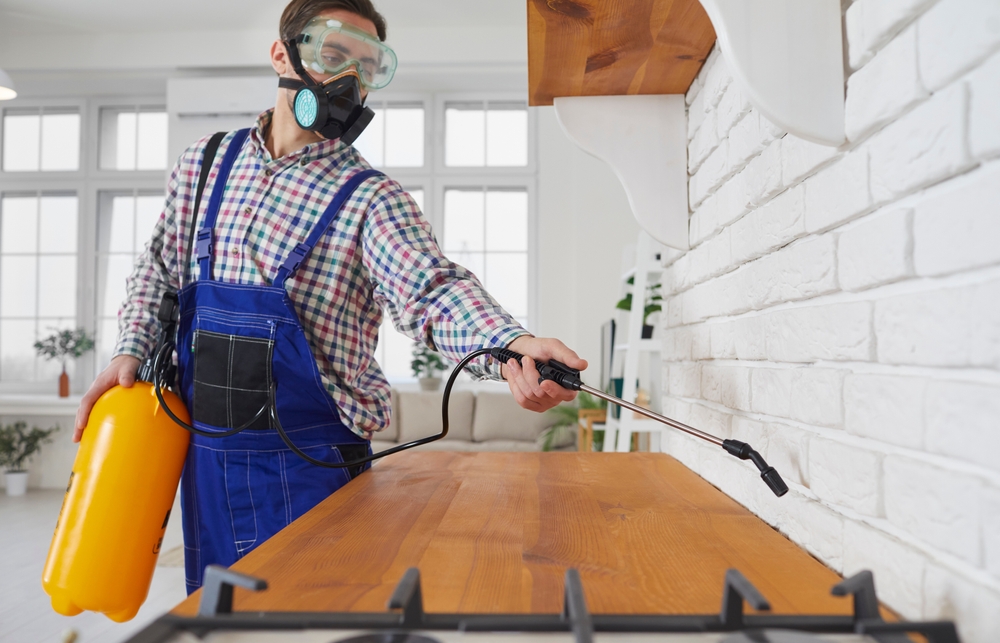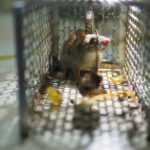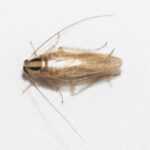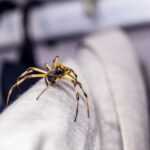Effective Termite Treatment: Top Methods & Tips to Protect Your Home
Got termites? Find out the best termite treatment methods and tips to protect your home. We’ll cover signs of infestation, DIY solutions, and when to call a professional.
- Termite infestations can cause significant damage to homes, with three main types: subterranean, drywood, and dampwood termites, each requiring distinct treatment approaches.
- Effective treatment options include termite bait stations, liquid termiticides, and gas fumigation, tailored to the severity of the infestation.
- Preventing future infestations involves moisture control, regular inspections, and proper wood storage to eliminate favorable conditions for termites.
Understanding Termite Infestation
Termites are a significant pest problem, primarily consuming wood and capable of causing immense damage to homes if infestations are left untreated. Termites that can damage homes fall into three primary categories. These include subterranean, drywood, and dampwood termites.
Early recognition of termite infestation signs is key to effective treatment and protection. Each type of termite has its own characteristics to be aware of. It is important to distinguish termites from other pests such as ants and carpenter ants, as proper identification is crucial for choosing the right treatment methods.
To effectively manage termite problems, always inspect all areas of your home, including the attic and basement, for any signs of termite activity. A thorough inspect of these spaces can help identify infestations early, even in hidden or less frequently accessed areas.
Subterranean Termites
Subterranean termites are known for their underground colonies. They enter homes through cracks or mud tubes and wood contact with the ground. Mud tubes are built by these termites to retain moisture as they travel to food sources. Spotting these tubes along your home’s foundation can indicate active infestation. Monitoring and termite bait stations are common treatment options for these pests.
Mud tubes are created by subterranean termites as protective pathways that allow them to travel between their colony and food sources. These tubes often travel up the foundation or walls, indicating an active infestation. If you notice mud tubes on your property, it’s a clear sign that subterranean termites are attempting to access wooden structures in your home.
Drywood Termites
Drywood termites, unlike subterranean termites, do not require ground contact to thrive. This makes them particularly insidious as they can infest attics and furniture without needing moisture from the ground.
Gas fumigation is a common method used to control drywood termites. These termites are often found in places such as attics and wooden furniture, making them a significant threat to your home furnishings.
Dampwood Termites
Dampwood termites prefer to build colonies in damp or decaying wood. They are larger than subterranean termites and consume wood with the grain if it’s sound and across the grain if it’s decayed.
Although they are less destructive than subterranean and drywood termites, they still pose a risk, especially in areas with high moisture.
Effective Termite Treatment Options
Effective termite treatment is essential for protecting your home from these destructive pests. Homeowners spend over two billion dollars each year on termite treatments. Selecting a suitable treatment plan should be based on your home’s conditions and the severity of the infestation. Various pesticides are used to kill termites, and surfaces and wood can be treated to prevent infestations. Some methods also allow you to spot treat specific areas where termite activity is detected, providing targeted control.
Here, we’ll explore the three primary treatment options: termite bait stations, liquid termiticides, and gas fumigation.
Termite Bait Stations
Termite bait stations are an effective method for controlling termite infestations. These stations attract termites and contain chemicals that they carry back to the colony. The baits contain growth inhibitors that disrupt the termites’ growth cycle, effectively reducing the colony’s population over time.
Bait stations provide a strategic method for control that targets termites directly.
Liquid Termiticides
Liquid termiticides are another powerful weapon in the fight against termites. These chemicals can be injected directly into wood to create a barrier that termites cannot cross. A termite trench filled with an insecticide-water mixture can protect a home for up to a decade.
Offering long-lasting protection, this method proves particularly effective for severe infestations.
Gas Fumigation
Gas fumigation effectively handles extensive infestations in wooden structures. Fumigants disrupt termite metabolism upon inhalation, eliminating the pests.
This method is highly effective but requires professional pest control services due to the complexity and risks involved.
DIY vs. Professional Termite Control
When dealing with a home pest termite infestation, homeowners must choose between DIY methods and professional pest control services. Both approaches have distinct advantages and drawbacks that should be evaluated based on cost, effectiveness, and expertise. Professional technicians are trained to handle complex infestations and often provide a service guarantee, giving customers peace of mind. Many pest control companies also offer special deals or discounts to attract new customers and ensure customer satisfaction.
Each method has its pros and cons, which should be considered to make an informed decision.
DIY Termite Treatment
DIY termite treatment can be a cost-effective option, typically costing about 10% of professional services. However, it’s crucial to read product labels and instructions thoroughly before treating termites on your own. Many DIY bug killers and pesticides are available for homeowners, but their effectiveness may vary. Although DIY methods can be cost-saving, they often lack the effectiveness of professional treatments and may not ensure complete eradication.
Prevention strategies such as eliminating moisture and sealing cracks can help but might not be adequate for severe infestations.
Professional Termite Services
Professional pest control services offer comprehensive solutions with guaranteed protection and ongoing maintenance. A pest control service ensures customer satisfaction and peace of mind through regular maintenance.
Additionally, professional services include thorough inspections and access to specialized tools that are more effective than DIY treatments. After the inspection, professionals often develop a customized plan tailored to the specific needs of your home and the extent of the infestation.
Preventing Future Infestations
Keeping future termite infestations at bay is key to maintaining a home pest free environment. Termites flourish in moist environments, thus reducing moisture around the home is vital. Regular inspections and proper wood storage are integral parts of a comprehensive prevention strategy. These measures are essential to prevent future infestations and maintain a pest-free home.
A deeper look into these preventive measures can provide more insight.
Moisture Control
Moisture control is a key strategy in termite protection. Eliminating sources of standing water around the home is vital, as termites thrive in high-moisture environments. Repairing leaks in pipes, faucets, and air conditioning units helps in controlling moisture.
Maintaining downspouts and gutters to direct water away from the home also helps in preventing termite attraction.
Regular Inspections
Annual inspections by pest control professionals can detect termite activity before it leads to severe damage. Scheduling these inspections can effectively catch any termite issues before they escalate, providing long-lasting protection against future infestations.
Proper Wood Storage
Proper wood storage is crucial for preventing termite attraction and protecting your home. Keeping firewood and lumber at least 20 feet away from your home reduces the likelihood of attracting termites. Additionally, lifting stored wood off the ground helps deter termites from accessing it.
Adhering to these simple storage guidelines can significantly reduce termite infestation risks.
Visible Signs of Termite Infestation
Early detection of visible termite infestation signs can prevent extensive home damage. Common signs include mud tubes, damaged wood, and the presence of swarmers and discarded wings. Finding dead termites, piles of dust, or evidence of a nest behind a wall can also indicate an active infestation.
Recognizing these signs allows for swift action to address the problem.
Mud Tubes
Termites create mud tubes as protective tunnels that allow them to travel between their colony and a food source without being exposed to air. Mud tubes on a structure’s foundation indicate active termite infestation and require professional inspection.
These tubes often travel up walls or supports, showing termites are navigating to access food within the building.
Damaged Wood
Termites can cause significant structural damage, compromising the integrity of wooden structures in homes. Signs of termite damage may resemble water damage, including buckling wood and swollen floors. The presence of maze-like tunnels in wood indicates extensive termite activity, particularly in drywood species.
Recognizing these signs early can help avoid costly repairs.
Swarmers and Wings
Swarmers are reproductive termites that leave their colony to establish new colonies. They are typically seen during specific times of the year when conditions are favorable for flying.
After mating, swarmers shed their wings, often resulting in discarded wings found indoors. The presence of swarmers and their discarded wings is a key indicator of a termite colony nearby.
Choosing the Right Termite Treatment Plan
Selecting the right termite treatment plan is essential for effectively managing an infestation. Comprehensive inspections help identify the severity of the problem and determine the best course of action.
Customized treatment plans and regular follow-up visits enhance the effectiveness of termite control.
Initial Inspection
The primary purpose of initial inspections is to determine the extent of termite activity. Many pest control services, including Gopher Patrol, offer initial inspections for free. These inspections are crucial for assessing the severity of termite infestations in your home and planning the appropriate treatment.
Tailored Solutions
Tailored treatment plans are meant to tackle the specific challenges of each unique termite situation effectively. These plans consider the specific needs and structure of the home, significantly enhancing the effectiveness of termite control.
Customized treatment plans can also consider unique environmental factors, making them more effective.
Follow-Up Visits
Regular follow-up visits confirm the ongoing effectiveness of the termite treatment. These visits verify that treatments are working and help detect potential re-infestations early.
Regular follow-up appointments are important to monitor treatment success and prevent future termite infestations.
Dealing with a termite infestation requires understanding the types of termites, recognizing the signs, and choosing the right treatment options. While DIY methods can offer short-term relief, professional services provide long-term solutions and peace of mind. Preventive measures like moisture control, regular inspections, and proper wood storage are essential for keeping your home pest-free. By taking these steps, you can protect your home from the destructive power of termites.
Frequently Asked Questions
How much is a termite treatment in NJ?
Termite treatment in New Jersey typically ranges from $500 to $2,000, depending on the severity of the infestation and the chosen method of treatment. It’s essential to get a professional evaluation for an accurate estimate.
Can you treat termites yourself?
You can treat termites yourself using insecticides like fipronil or boric acid, either as a direct powder application or in a spray form for effective control. However, for significant infestations, professional help is often recommended for comprehensive treatment.
What is the most effective treatment for termites?
Fumigation is the most effective treatment for severe termite infestations, as it eradicates all termites through exposure to sulfuryl fluoride gas. For less severe cases, applying insecticides like imidacloprid to the soil or using termite baits can effectively manage and prevent infestations.
What are the most common types of termites that infest homes?
The most common types of termites that infest homes are subterranean, drywood, and dampwood termites. Understanding these types is crucial for effective prevention and treatment.
How do I know if I have a termite infestation?
To determine if you have a termite infestation, look for mud tubes, damaged wood, swarming insects, or discarded wings around your property. If you notice any of these signs, it’s crucial to take immediate action.





